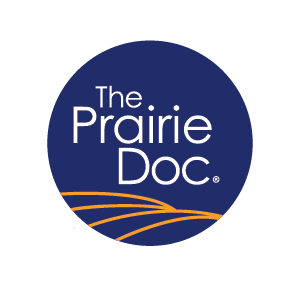Motion is Lotion; the Importance of Movement

Orthopedic medicine is truly a team sport; we have the opportunity to collaborate with nonsurgical professionals, including physical therapists, occupational therapists, athletic trainers, among others, to deliver comprehensive musculoskeletal care. While there are proven surgical options to help our patients where indicated, in many cases, patients are able to achieve pain relief and improved function with nonsurgical treatment options. Much of orthopedic surgical training is appropriately dedicated to the planning and execution of surgery, but it is also important to understand and recognize patients who present with conditions readily addressed without surgery and the accompanying risks of invasive procedures. It is also important to advocate the idea of prevention.
A phrase that is often loosely spoken within our clinic is, “Motion is Lotion.” What does this mean? This is a simple phrase to express the importance of movement and activity, whether that be independent exercise, supervised or specialized therapy, or simply taking a walk outside. With inactivity, we naturally are at risk for muscle loss, obesity, and the many adverse health conditions associated with obesity. It is important to consider exercise and its many health benefits. More specifically, resistance training and cardiovascular exercise have been shown to have robust benefits to our overall physical and mental health and function.
The National Institute of Health has been studying the effect of strength training for more than 40 years, demonstrating beneficial results in adults including maintained muscle mass, maintenance and improvement of mobility, and increasing healthy years lived. Not all resistance training is the same, however, the effects on improved function largely are the same. Resistance training promotes muscle strength and growth, simultaneously improving our overall cardiovascular health. Studies have demonstrated that our muscle mass peaks around the age of 35. Naturally, muscle volume and performance decline slowly until we reach the age of approximately 65 where muscle volume loss proceeds faster. However, this decline in muscle volume and strength is substantially slowed by resistance training. Dr. Fielding with Tufts University, an NIH-supported scientist, has studied resistance training at a molecular level. His research has suggested that the best recipe for improving physical function and avoiding disability is a combination of walking and resistance training, whether resistance be against gravity or moving weight. The list of research-proven benefits of resistance training is quite impressive. In addition to improved muscle mass and cardiovascular health, resistance training offers improved metabolism and promotes weight loss of adipose tissue, increased bone density potentially preventing fractures associated with aging and fragility, improved balance and coordination, and natural release of anti-inflammatory mediators. Outside of bone and muscle anatomy, being active and exercising has been proven to reduce stress, improve our mood and cognitive performance, boost our energy and libido, as well as provide a mean of self-confidence.
Now understanding the many benefits of physical activity, where do we start? If you are looking for some help, reach out to your physician, a personal trainer, or other trained professionals such as a physical therapist or athletic trainer for guidance. The health benefits will not be immediately realized, but you will eventually notice an improvement in your mood, and perhaps many years from now, also an improvement in your overall physical health. “Motion is lotion.” Let’s get out and move!
Anthony P. Fiegen, MD is a fellowship-trained orthopedic sports medicine physician specialized in treating conditions of the shoulder, hip, and knee at the Orthopedic Institute. In addition to a comprehensive sports medicine practice and joint preservation, he also performs joint replacement of the shoulder, hip, and knee. Dr. Fiegen grew up in Madison, SD. He attended South Dakota State University competing for the Jackrabbits’ men’s basketball team from 2009-2013. Prior to joining Orthopedic Institute in 2024, Dr. Fiegen completed orthopedic surgery residency at Mayo Clinic in Rochester, MN. He then went on to complete a sports medicine fellowship at Wake Forest University in Winston-Salem, NC, where he served as a team physician for the ACC Wake Forest football, men’s basketball, and baseball teams. Follow The Prairie Doc® at www.prairiedoc.org, Facebook, Instagram, YouTube, and Threads. Prairie Doc Programming includes On Call with the Prairie Doc®, a medical Q&A show (most Thursdays at 7pm streaming on Facebook), 2 podcasts, and a Radio program (on SDPB), providing health information based on science, built on trust.







